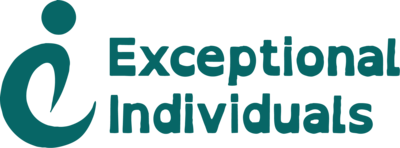How Employers Can Embrace Neurodiversity in the Workplace

Cottonbro Studio: from Pexels
At Exceptional Individuals we specialise in supporting Neurodivergent individuals in work and assisting employers to foster more inclusive work environments.
As a Neurodivergent individual, I found navigating the job market challenging and it took a social enterprise specialising in neurodiversity to find a good fit. This type of scenario is a lot better than it used to be, however, there is a difference between accepting and embracing.
What is neurodiversity?
Neurodiversity has become somewhat of a catch-all term in recent years, which is the context we shall be using. I.e. neurodiversity encapsulates all-natural cognitive variations of people.
Neurodivergence, on the other hand, refers to a specific group of cognitive conditions including Dyslexia, Dyspraxia (DCD), Autism (ASD), and Attention Deficit Hyperactivity Disorder (ADHD) and must be represented within a large group for it to truly qualify as neurodiverse.
On one hand, it is almost guaranteed that Neurodivergence will be included as up to 20% of the population at any given time is Neurodivergent. However, on the other hand, employment practices, work environments, and workplace culture can all unintentionally discriminate against, put off, or exclude ND individuals.
Whether is it is to get the best out of your staff, give everyone an equal chance, cover legal obligations, or demonstrate your commitment to progression there is always a reason to embrace diversity.
Why does embracing neurodiversity in the workplace matter?
- It has always been a requirement of business to evolve with culture and neurodiversity is not just a fad or a requirement, more so a necessity and an opportunity.
- To ensure that all demographics, including minority groups, have an equal opportunity to enter into and thrive at work. If an active effort is not made, it can transpire that employers are unintentionally discriminating against, or at least excluding, some demographics or minority groups more than others.
- To have a culture that is truly representative and can reflect that in their expression and output.
Benefits of embracing neurodiversity
- Candidates will be attracted to an employer with an accepting approach and culture.
- A greater range of talent can improve collaborative efforts and the quality of output.
- Inclusion increases social impact and can elevate a company’s standing.
- Having an inclusive environment promotes trust and well-being, and ensuring a content workforce increases productivity and provides positive word of mouth.
- In some cases, there may be opportunities to or the event of providing opportunities to people who previously found them unavailable or inaccessible and therefore providing opportunities to disadvantaged individuals.
- Embracing neurodiversity increases awareness and understanding which can be passed on and championed.
Tips for embracing neurodiversity in the workplace
Training and workshops to build awareness in the workplace
Like with most things, staff are on different levels respectively, and this includes awareness of and experience with neurodiversity. Awareness training offers a range of information to help clarify what neurodivergence is, how it can impact people, what it means for the workplace, and how best to support it and garner advantage from it. By offering this training to everyone in your organisation from CEOs to any staff level, you can begin to embrace neurodiversity in your workplace.
This type of endeavour is suitable for any audience but can be tailored to a specific sector or group. At Exceptional Individuals, we bring our lived experience into our content so that experience can be gathered from our first-hand accounts.
Attract neurodivergent talent
Neurodivergence lends itself to a lot of areas that businesses are looking for, e.g. creativity, novel problem-solving, computational ability and integrity. However, those same people can be put off if there seems to be a barrier to entry or a lack of suitable support.
By embracing inclusion, you are committing to making the work environment suitable for everybody and by doing that, you attract a greater range of minds with a diverse range of approaches.
Photo by RDNE Stock project via Pexels
Use inclusive language
One of the most common barriers to management and leadership is language, whether that’s what language to use, how to start a conversation, or what to say under certain circumstances.
The use of inclusive language can be a good first step to surmounting this barrier. For example, while terms such as ‘disability’ and ‘disorder’ are commonly used in the medical model.
Many individuals with these conditions do not identify with or describe themselves that way. Instead, using words like ‘condition’ can address the same topic without the stigma attached
to the language. In essence, Inclusive language refers to a vocabulary that does not avoid the subject, but incorporates it in a neutral or positive way. This allows the conversations to flow naturally without causing offence.
This subject can be incorporated as part of staff training workshops and other inclusion practices as a means of introducing it and normalising it across the business.
Create a supportive environment for neurodivergent people (who to go to for help, ask what support they need as every neurodivergent individual is different, handle meetings and performance issues sensitively, flexible working etc.)
In order to determine needs and preferences, awareness sessions are a good start. However, this is often the outside looking in. It is necessary to get an internal view too to truly be inclusive.
Round tables
Round tables can be a good way to get a ranged view of what is happening and what is required within your organisation. It can include internal and external participants for a richer and more holistic input. This can also lead to, or result in, the development of Employee Resource Groups (ERG).
By having representatives speak together in a structured but open format, the information collected can then be used for strategies over the next steps, and in the meantime, the participants should feel heard and supported.
Designated support staff
Having specific staff to approach for specific needs or enquiries is important as it creates consistency and removes the barrier of unclear processes. While HR will often be involved in formal arrangements, it can be advantageous to have general staff available for enquiries such as appointing ND ambassadors who are available for informal or preliminary conversations.
Create an inclusive recruitment process
Even if your environment and culture are inclusive, this is comparatively unknown and going to waste if your recruitment process prevents neurodiverse applicants from even applying. There are many ways of ensuring that the barriers are minimal including offering alternatives to application/interviewing formats, having clear adjustments available for the application/interview format, or having the hiring process audited to identify specific barriers to entry.
Creating an open culture
Encouraging disclosure through inclusive practices and offerings help staff and applicants feel they don’t need to hide their condition or mask who they are. It creates an environment where they can openly discuss sensitive or personal matters freely, leading towards understanding or resolution.
Legal obligations
Different countries have various obligation levels and specific requirements about DEI and disability. However, in the UK the 2010 Equality Act clearly states that reasonable adjustments i.e. support that allows people to operate as normally as possible should be provided by the employer and that ND is protected under disability.

Photo by Ivan Bertolazzi from Pexels
How to Make neuroinclusive changes to your workspace
Quiet areas
Providing designated workplace spaces with low noise can allow those that are distracted easily to focus or unwind, allowing for productive progression to be continued or resumed.
Hybrid working setups
It is often the case that the office or live working environment is much more distracting or disruptive for neurodivergent staff. Therefore, allowing them to work from home, changing their schedule to avoid rush hour and other associated elements e.g. crowds, or offering more malleable hours can all contribute towards less stress and distraction and more active work
Assistive technology and reasonable adjustments
Sometimes, altering the environment or removing staff from it is not appropriate. However, providing equipment to support people on an individual basis can be a great alternative. For example, noise cancelling headphones or sound modulation ear plugs can help minimise the noise barrier
The future of neurodiversity in the workplace
- More companies recognise the value of neurodiversity – Many companies speak of the virtues of inclusion. However, in order to get the best out of your staff, it is important to see the best in them and make them feel supported and included, which requires appropriate support and understanding.
- More tailored support systems – A desire to support neurodivergent staff is a great starting point. However, implementing processes that work for different needs is necessary. Whether the challenge lies in processing, literacy, environmental sensitivity, or organisational inconsistency, there needs to be clear and accessible ways that people can address these issues confidently and conveniently, without feeling like they are putting themselves in jeopardy or inconveniencing others
- Flexible working, open-mindedness etc. – The more adaptable businesses are, the better it can support individuals to achieve their goals whilst feeling safe and empowered. To become more flexible and adaptable, businesses must first understand the ‘why’ and ‘who’ before effectively implementing the many ‘what’ and ‘how’ aspects of inclusive practices.
This information only scratches the surface, but hopefully identifies some talking points and opportunities for further investigation whether you are a business representative, a staff member, or a prospective employee. If you’re looking to take the necessary steps towards embracing neurodiversity in your organisation, get in touch with us now for consultancy or training services.





